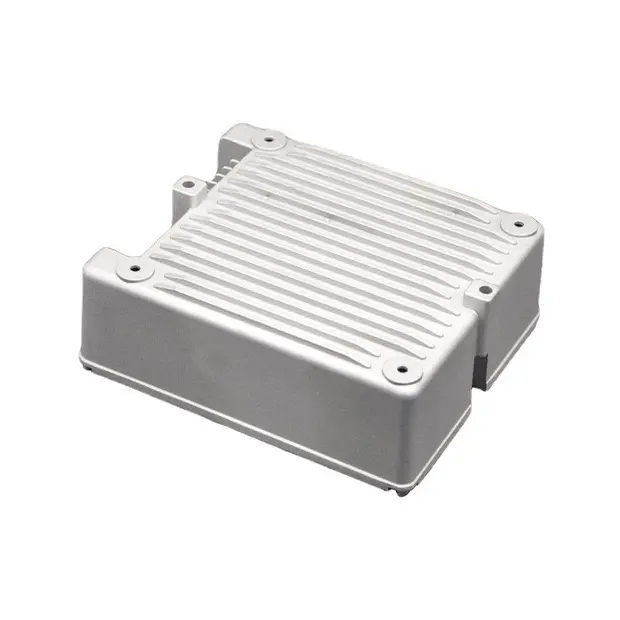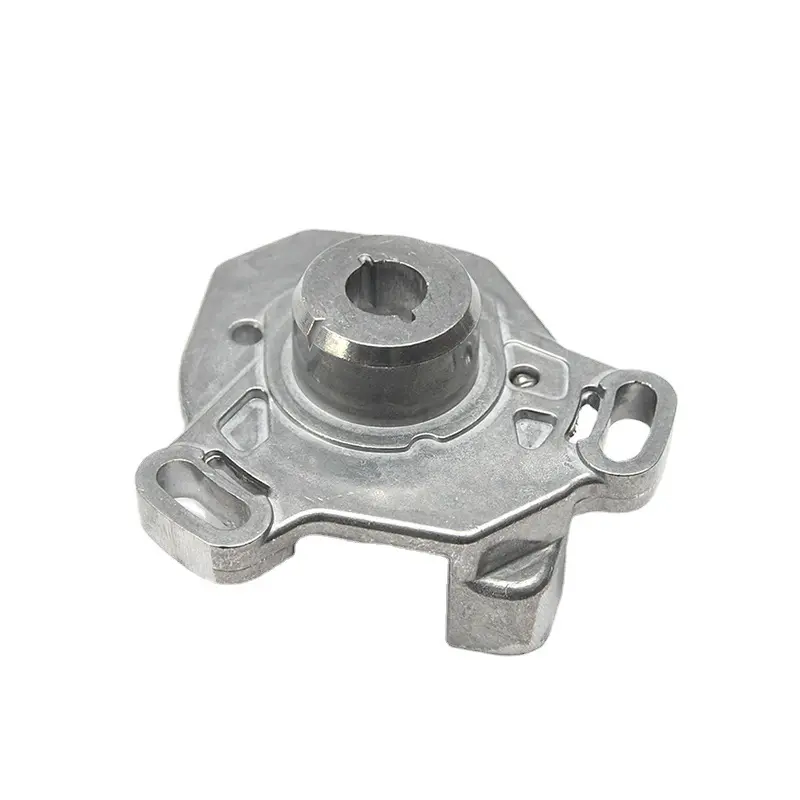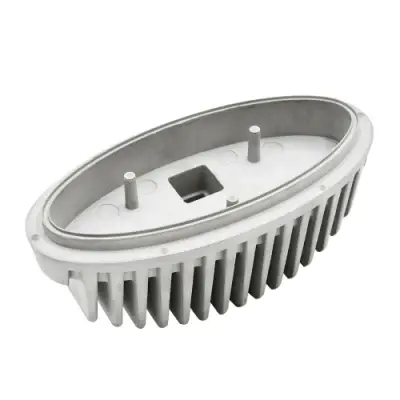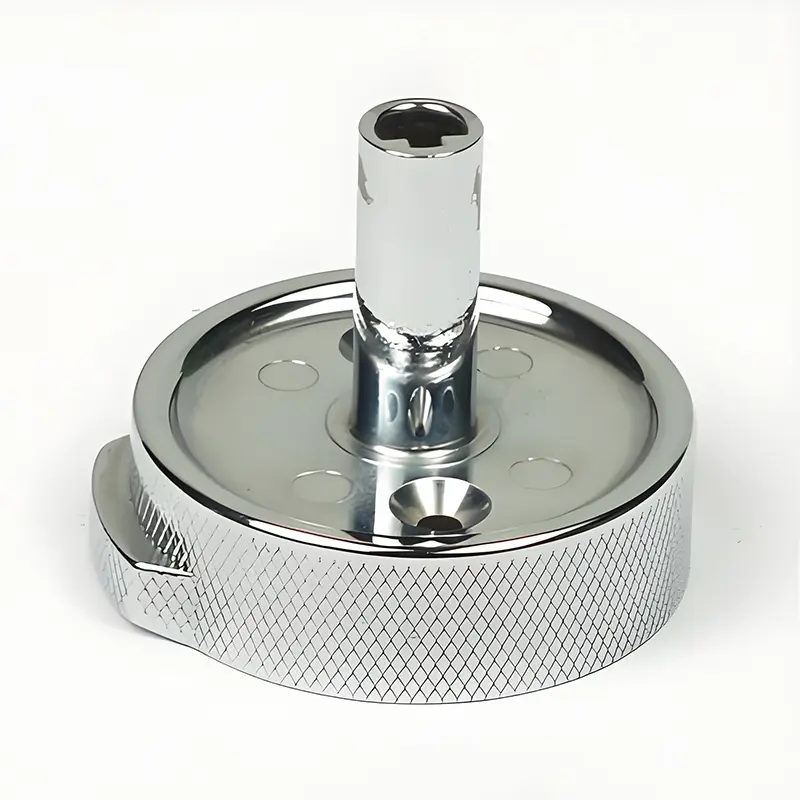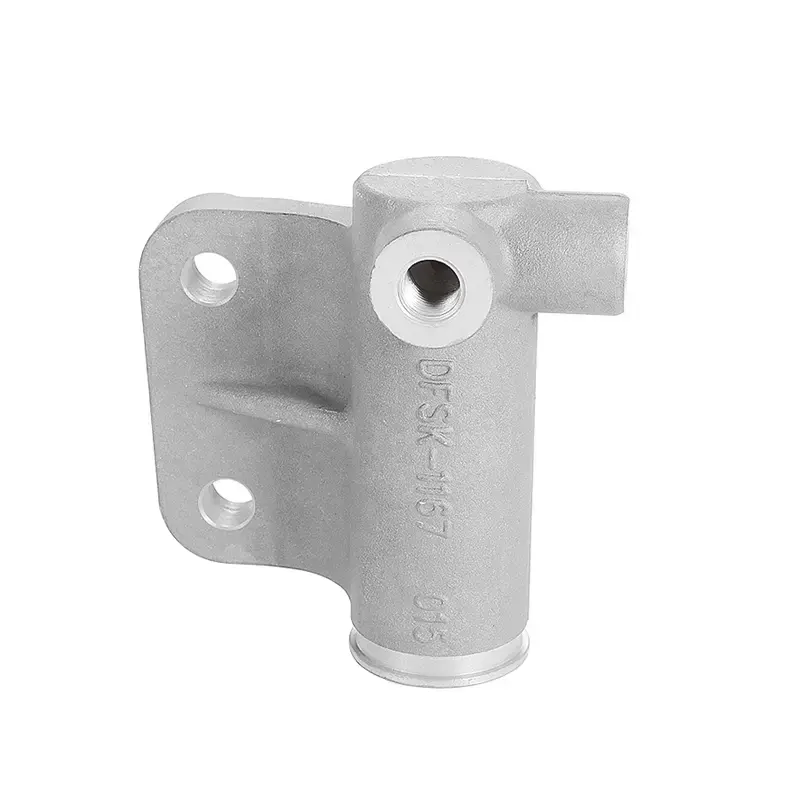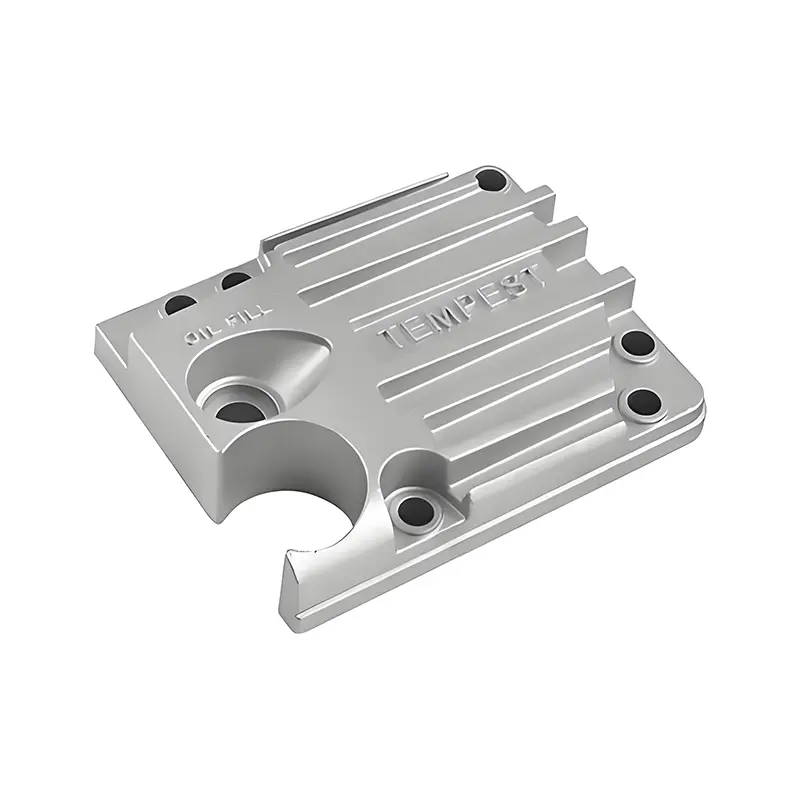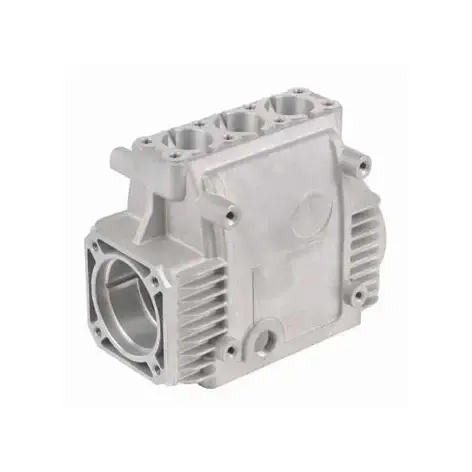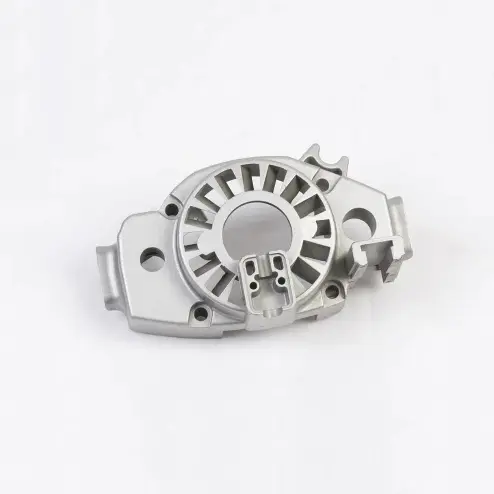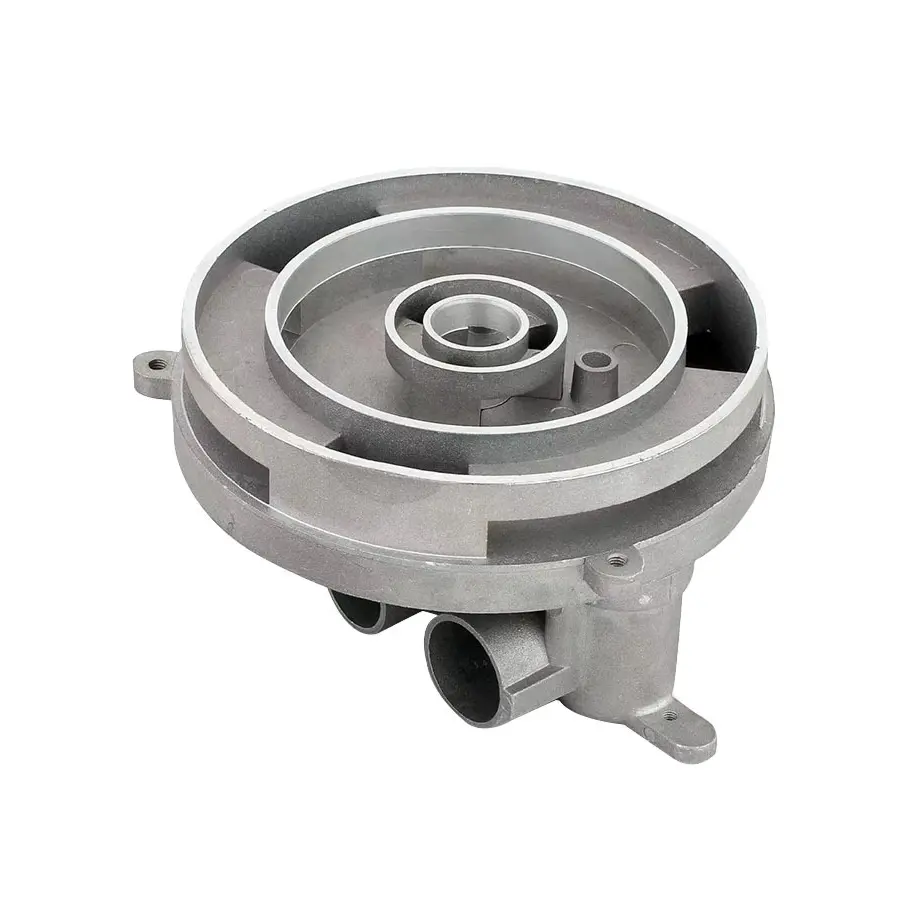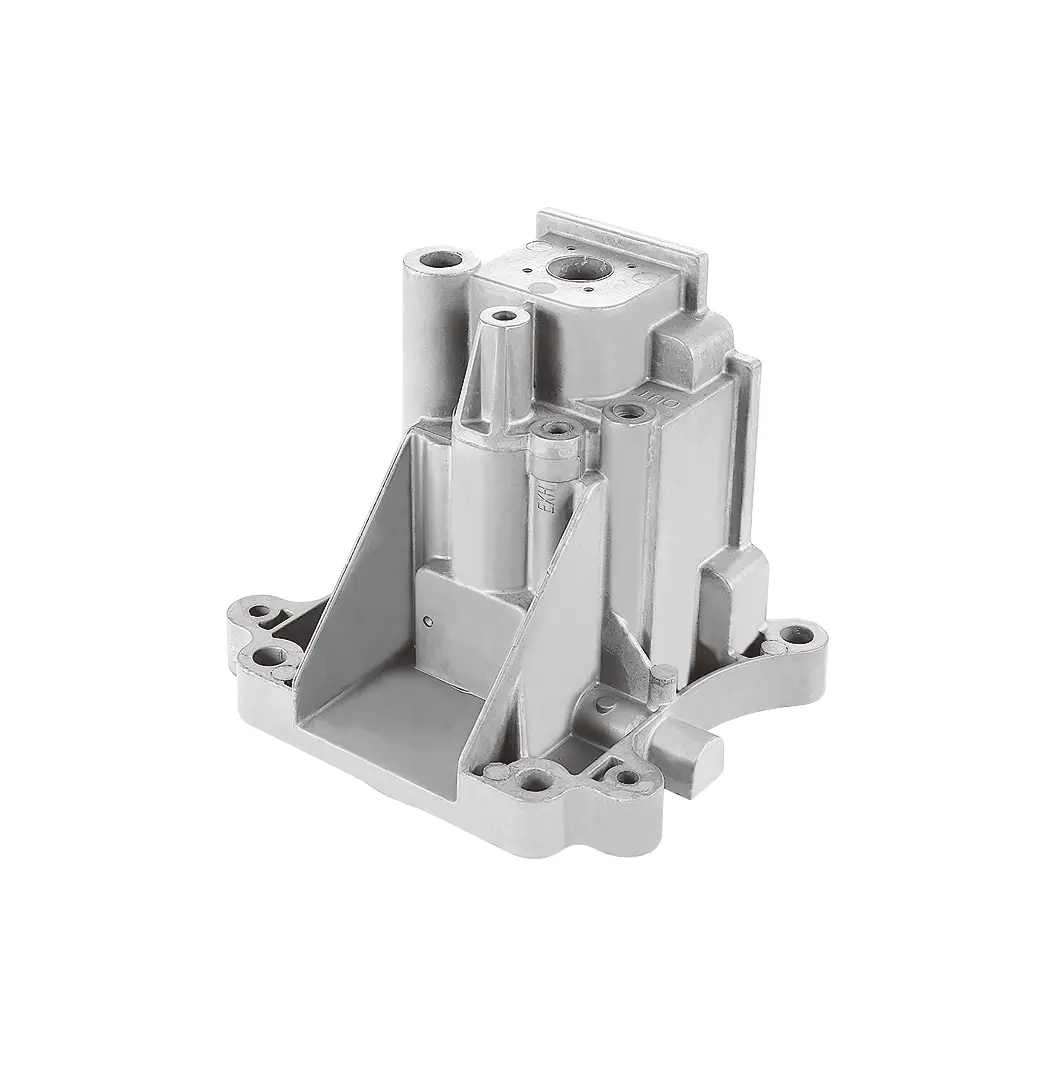 +86-13516964051
+86-13516964051 Aluminum Alloy Casting Surface Treatment: Process, Applications, and Advantages
Aluminum Alloy Casting Surface Treatment: Process, Applications, and Advantages
Aluminum alloy castings are widely used in various fields, including automotive, aerospace, and electronics, due to their lightweight, high strength, and excellent electrical and thermal conductivity. However, the surface properties of aluminum alloy castings directly affect their service life and aesthetics. Therefore, surface treatment has become an indispensable step in the production of aluminum alloy castings.
1 Common Surface Treatment Processes for Aluminum Alloy Castings
(I) Anodizing
Anodizing is an electrochemical process that creates an oxide film on the surface of aluminum alloys, improving their corrosion and wear resistance. Depending on the electrolyte and process parameters, anodizing can be divided into the following types:
Type 1 Anodizing (Chromic Acid Anodizing): Using chromic acid as the electrolyte, the resulting oxide film is relatively thin (at least 0.0001 inch), offering excellent corrosion resistance and slight staining properties.
Type 2 Anodizing (Sulfuric Acid Anodizing): Using sulfuric acid as the electrolyte, the resulting oxide film is relatively thick (approximately 0.0002-0.001 inch), offering excellent corrosion resistance and high dyeability. Type 3 or hard coat anodizing: Also using sulfuric acid, but with a higher current, produces a thicker oxide film (>0.001 inch) with enhanced wear and corrosion resistance.
Anodized aluminum alloy castings typically require a sealing treatment to improve their corrosion and wear resistance. Sealing can be achieved using hot water, boiling water, or steam.
2 Electroplating
Electroplating is a surface treatment method that deposits a layer of metal or alloy on the surface of an aluminum alloy through electrolysis. Common electroplating methods include chromium plating, nickel plating, copper plating, and zinc plating. The electroplated layer can significantly improve the wear resistance, conductivity, and corrosion resistance of aluminum alloys, and impart an excellent decorative effect.
The electroplating process includes the following steps:
Pretreatment: Cleaning, degreasing, pickling, and activation to remove grease and impurities from the workpiece surface and form a uniform activated film.
Electroplating: Conducted in a plating tank, direct current is used to reduce and deposit metal ions on the aluminum alloy surface.
Post-treatment: Passivation, sealing, and drying to improve the corrosion resistance and stability of the electroplated layer.
3Powder Coating
Powder coating is a process in which dry powder is electrostatically applied to a material and cured using heat. Powder coatings are categorized as thermoplastic and thermosetting. Thermoplastic powder coatings soften when heated, making them reversible and reusable; thermosetting powder coatings form irreversible chemical bonds when heated, making them thicker and more durable.
The advantages of powder coatings include:
Scratch and corrosion resistance
High flexibility, allowing for a variety of colors and effects
Environmentally friendly, with no solvent evaporation
4 Polishing
Polishing is a mechanical process that uses abrasive materials to achieve a mirror-like finish on the surface of aluminum alloy castings. Polishing involves the following steps:
Roughing: Removing surface defects and burrs.
Polishing: Smoothing the metal surface.
Brightening: Further enhancing the surface gloss.
Protecting: Applying wax to protect the final finish.
Polishing can significantly improve the aesthetics and surface quality of aluminum alloy castings and is suitable for products requiring a high level of surface finish.
5 Sandblasting/Shot Peening
Sandblasting and shot peening involve the use of sand or steel shot to remove scale, oil, and other impurities from the workpiece surface. Sandblasting increases surface roughness and improves adhesion for subsequent treatments. Shot peening, on the other hand, uses high-velocity steel shot to strengthen the workpiece surface and enhance its mechanical properties.
The choice between sandblasting and shot peening depends on the shape and material of the workpiece. Sandblasting is suitable for workpieces that need to remove surface impurities and increase roughness, while shot peening is suitable for workpieces that need to improve surface hardness and fatigue resistance.
(6) Chemical Conversion Coating
Chemical conversion coating treatment forms a dense chemical conversion coating on the surface of aluminum alloys through a chemical reaction without the action of an external electric current. This conversion coating offers excellent corrosion resistance and adhesion and is commonly used for pretreatment and protection of aluminum alloys.
Common chemical conversion coating treatment methods include:
Chromate treatment: The resulting chromated film offers the best corrosion resistance, but it also produces significant environmental pollution.
Phosphochromate treatment: Suitable for 3C products, as trivalent chromium is non-toxic. Chromium-free chemical conversion: Using fluorine complexes containing titanium or zirconium, it is environmentally friendly, colorless, and transparent.
7 Chemical Plating
Chemical plating forms a coating on the surface of an aluminum alloy through the reduction of chemical substances in the absence of an external current. Chemical coatings offer excellent corrosion and wear resistance and are commonly used for the decoration and protection of aluminum alloys.
8 Hot-Dip Plating
Hot-dip plating involves placing an aluminum alloy workpiece in molten metal to form a coating on its surface. Hot-dip plating offers excellent corrosion and wear resistance and is commonly used for the decoration and decoration of aluminum alloys.
9Thermal Spraying
Thermal spraying involves atomizing molten metal and spraying it onto the surface of an aluminum alloy to form a coating. Thermal spray coatings offer excellent corrosion, wear, and high-temperature resistance and are commonly used for the protection and repair of aluminum alloys.
10 Hot Stamping
Hot stamping involves applying heat and pressure to an aluminum alloy surface to form a coating. Hot stamping layers offer excellent decorative and corrosion resistance and are commonly used for the decoration and marking of aluminum alloys.
II. Application Areas of Surface Treatment of Aluminum Alloy Castings
(I) Automotive Industry
In automotive manufacturing, aluminum alloy castings are widely used in engine components, body structures, and interior trims. Surface treatment can improve the corrosion and wear resistance of these components, extending their service life. For example, anodizing and electroplating are commonly used on components such as engine blocks, pistons, and connecting rods to enhance their mechanical properties and corrosion resistance.
(II) Aerospace
The aerospace industry places extremely high demands on lightweight and high-strength materials. Surface treatment of aluminum alloy castings can meet these demanding requirements. For example, hard anodizing and chemical conversion coatings are commonly used on aircraft structural and engine components to enhance their corrosion and wear resistance.
(III) Electronics Industry
Aluminum alloy housings and heat sinks in electronic equipment require excellent electrical and thermal conductivity, as well as an aesthetically pleasing surface. Anodizing and powder coating are commonly used surface treatment methods in the electronics industry to enhance the corrosion resistance and aesthetics of products.
(IV) Construction Industry
Applications of aluminum alloy castings in the construction industry include doors and windows, curtain walls, and decorative components. Surface treatment can improve the weather resistance and aesthetics of these products. For example, electrophoretic coating and powder coating are commonly used on aluminum alloy profiles for architectural applications to enhance their corrosion resistance and decorative effects.
(V) Medical Devices
Aluminum alloy components in medical devices require excellent biocompatibility and corrosion resistance. Chemical conversion coating and anodizing are common surface treatment methods for medical devices, which can improve the corrosion resistance and biocompatibility of these products.
3. Advantages of Surface Treatment of Aluminum Alloy Castings
(I) Improving Corrosion Resistance
Aluminum alloys have a certain degree of corrosion resistance in the atmosphere, but surface treatment can significantly enhance their corrosion resistance. For example, anodizing and electroplating can form a dense protective film on the aluminum alloy surface, preventing contact between the corrosive medium and the substrate.
(II) Improving Wear Resistance
Surface treatment can improve the wear resistance of aluminum alloy castings. For example, hard anodizing and electroplating can form a high-hardness film on the aluminum alloy surface, enhancing its wear resistance.
(III) Improving Aesthetics
Surface treatment can significantly enhance the appearance of aluminum alloy castings. For example, powder coating and anodizing can provide aluminum alloy castings with a variety of colors and decorative effects to meet the needs of different customers.
(IV) Improving Mechanical Properties
Certain surface treatment methods, such as shot peening and thermal spraying, can improve the mechanical properties of aluminum alloy castings. Shot peening can increase the hardness and fatigue resistance of the workpiece surface, while thermal spraying can form a wear-resistant coating on the surface.
(V) Environmental Advantages
With increasing environmental awareness, more and more surface treatment processes are adopting environmentally friendly materials and processes. For example, processes such as chromium-free chemical conversion coating and powder coating not only improve product performance but also reduce environmental pollution.
4. Process Flow of Surface Treatment of Aluminum Alloy Castings
(I) Pretreatment
Pretreatment is a key step in surface treatment. Its purpose is to remove grease, impurities, and oxide scale from the workpiece surface, providing good surface conditions for subsequent processing. Pretreatment includes the following steps:
Cleaning: Using a cleaning agent to remove grease and impurities from the workpiece surface.
Degreasing: Removing oil stains from the workpiece surface through chemical or physical methods.
Pickling: Using an acidic solution to remove oxide scale from the workpiece surface. Activation: A chemical reaction forms an activated film on the workpiece surface, improving adhesion for subsequent treatments.
(II) Surface Treatment
Surface treatment is the core step in the surface treatment of aluminum alloy castings. Its purpose is to form a film with specific properties on the workpiece surface. Surface treatment includes the following steps:
Anodizing: An electrochemical reaction forms an oxide film on the aluminum alloy surface.
Electroplating: An electrolytic deposition of a metal or alloy layer on the aluminum alloy surface.
Powder coating: An electrostatic spraying and high-temperature curing form a powder coating on the aluminum alloy surface.
Chemical conversion coating: A chemical reaction forms a chemical conversion film on the aluminum alloy surface.
(III) Post-treatment
Post-treatment is the final step in surface treatment. Its purpose is to improve the corrosion and wear resistance of the workpiece and enhance the surface quality. Post-treatment includes the following steps:
Sealing: Hot water, boiling water, or steam treatment seals the pores of the oxide film, improving its corrosion resistance.
Passivation: A chemical reaction forms a passive film on the surface, improving its corrosion resistance. Drying: Remove moisture from the workpiece surface by heating to improve surface quality。
5. Quality Control of Surface Treatment of Aluminum Alloy Castings
(I) Surface Quality Inspection
Surface quality inspection is a key step in surface treatment quality control, ensuring that the workpiece surface meets specified quality standards. Surface quality inspection includes the following aspects:
Appearance Inspection: Observe the workpiece surface visually or under a microscope to check for defects.
Thickness Inspection: Measure the thickness of the film on the workpiece surface using a thickness gauge to ensure it is within the specified range.
Adhesion Inspection: Measure the adhesion of the film on the workpiece surface using the cross-cut method or pull-off method to ensure good adhesion.
(II) Corrosion Resistance Inspection
Corrosion resistance inspection is a key step in surface treatment quality control, ensuring that the corrosion resistance of the workpiece surface meets specified quality standards. Corrosion resistance inspection includes the following aspects:
Salt Spray Test: Use a salt spray test chamber to simulate an atmospheric corrosion environment to test the corrosion resistance of the workpiece surface.
Neutral Salt Spray Test (NSS): Use a 5% sodium chloride solution to test the corrosion resistance of the workpiece surface. Copper Accelerated Acetic Salt Spray Test (CASS): A 5% sodium chloride solution and a 0.26% copper chloride solution are used to test the corrosion resistance of the workpiece surface.
(III) Wear Resistance Testing
Wear resistance testing is a key step in surface treatment quality control, ensuring that the wear resistance of the workpiece surface meets the specified quality standards. Wear resistance testing includes the following aspects:
Abrasion Testing: Using a wear testing machine to simulate actual operating conditions, the wear resistance of the workpiece surface is tested.
Hardness Testing: Using a hardness tester to measure the hardness of the workpiece surface to ensure that it falls within the specified range.
(IV) Environmental Testing
Environmental Testing is a key step in surface treatment quality control, ensuring that the materials and processes used in the surface treatment process meet environmental requirements. Environmental testing includes the following aspects:
Heavy Metal Testing: Chemical analysis is used to determine whether the materials used in the surface treatment process contain heavy metals.
Volatile Organic Compound (VOC) Testing: Gas chromatography is used to detect volatile organic compounds released during the surface treatment process.
6. Future Development Trends in Surface Treatment of Aluminum Alloy Castings
(I) Environmental Protection
With increasing environmental awareness, the surface treatment industry will increasingly adopt environmentally friendly materials and processes. For example, processes such as chromium-free chemical conversion coating and powder coating not only improve product performance but also reduce environmental pollution.
(II) High Performance
In the future, surface treatment processes will develop towards high performance. For example, nanotechnology can be used to form a nanocoating on the surface of aluminum alloys, significantly improving their wear and corrosion resistance.
(III) Intelligentization
Intelligent technology will be increasingly applied to surface treatment processes. For example, automated equipment and robots can be used to automate surface treatment, improving production efficiency and quality stability.
(IV) Multifunctionalization
In the future, surface treatment processes will develop towards multifunctionalization. For example, composite coating technology can be used to form a coating on the surface of aluminum alloys with multiple functions, such as wear resistance, corrosion resistance, conductivity, and decorative properties.








